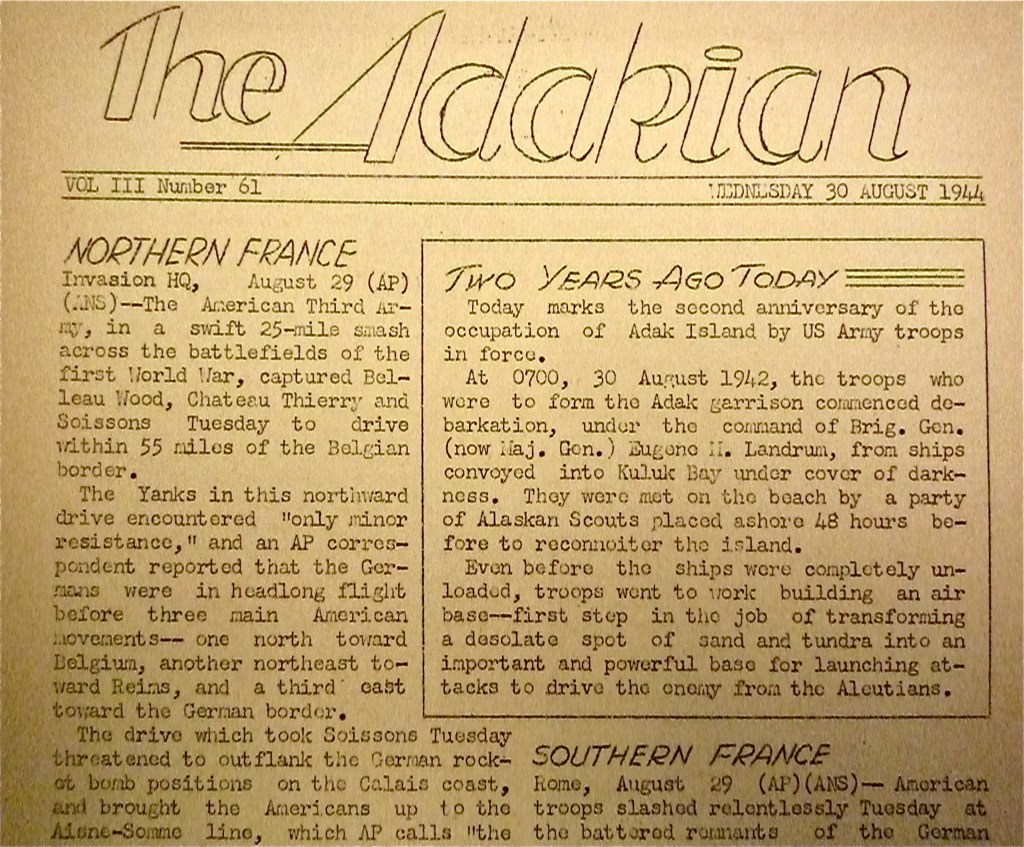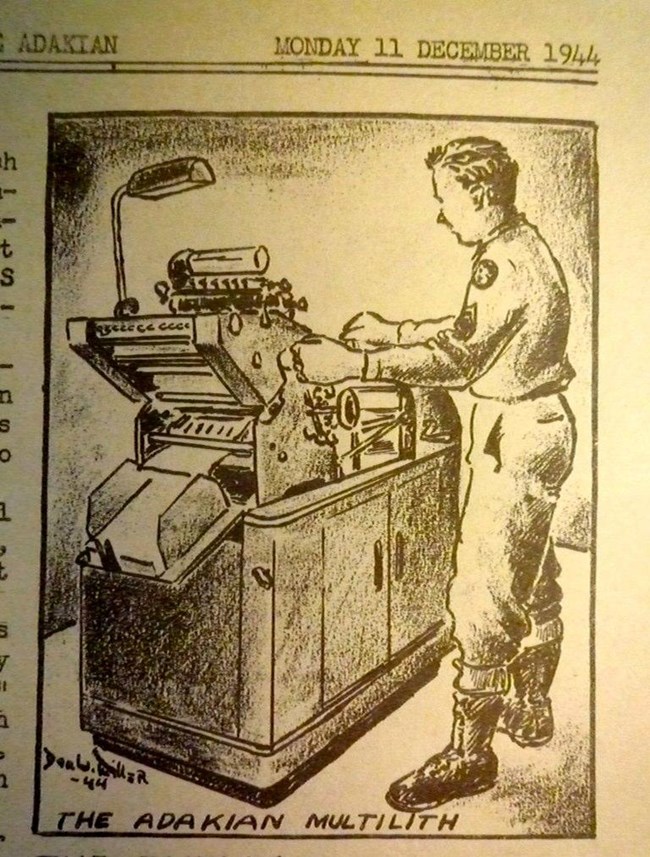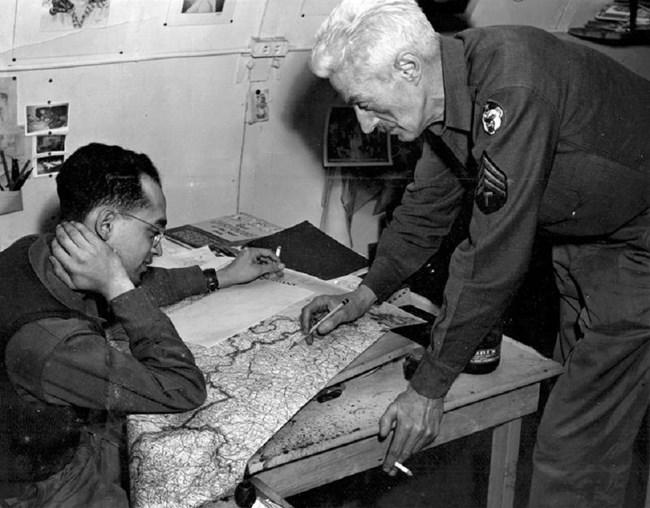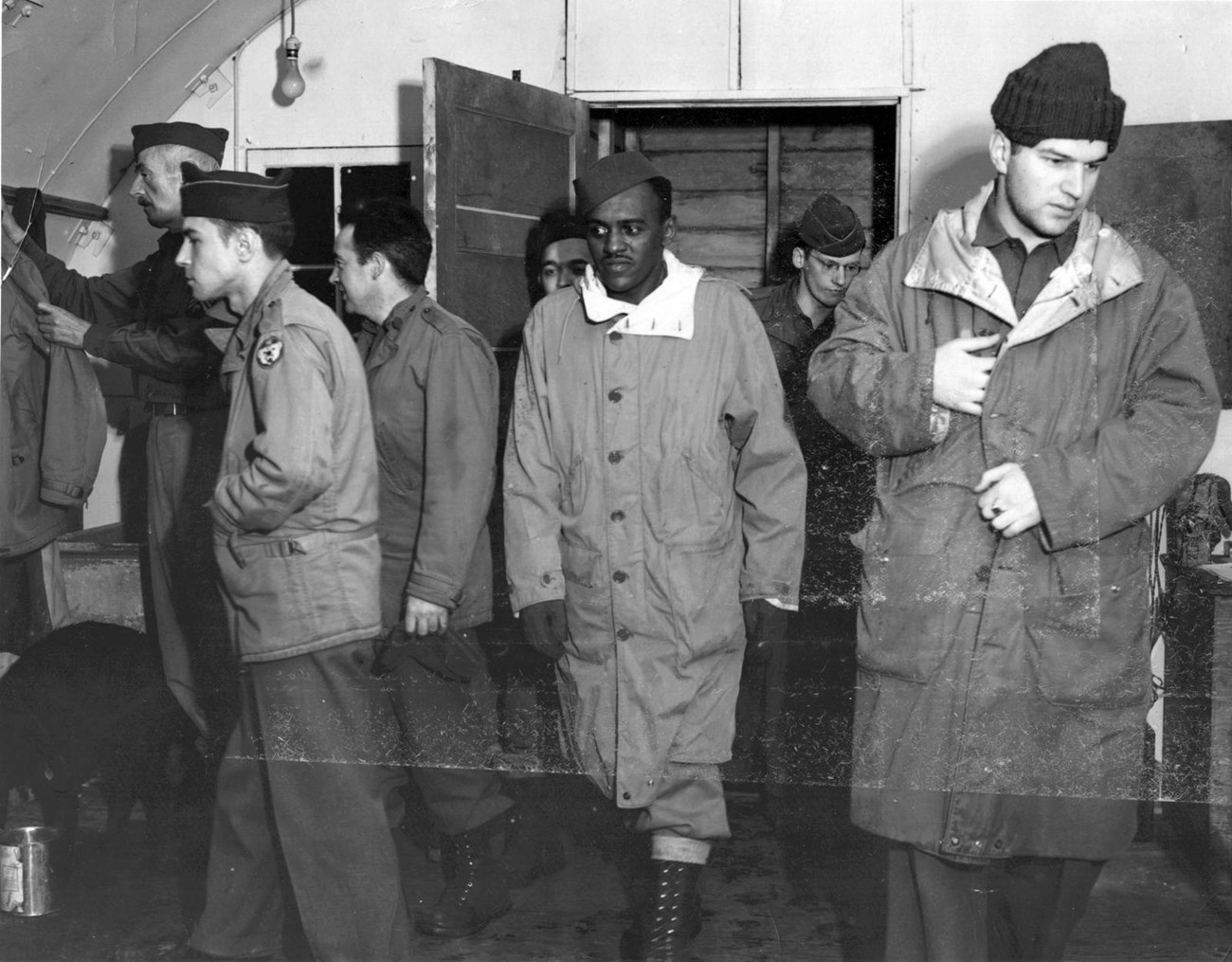Last updated: July 18, 2025
Article
The Adakian

Courtesy of Peter Porco

Courtesy of Peter Porco
The Newspaper
The newspaper was published daily in the morning, so the staff often worked through the night to get it ready to print. The newspaper was published on two (front and back) legal-size pieces of paper, using a mimeograph machine. The cartoons were a popular part of the four-page newspaper. Each issue had 2-4 single panel cartoons, depicting the life and hardships of being stationed in the Aleutians. While the newspaper was only for servicemen stationed on Adak, it was known on other islands because of the popular cartoons. Issues also contained movie reviews, profiles of soldiers and other people, maps, illustrations, and of course, news of the war, the mainland US, and abroad.
Despite being editor and coming up with many of the witty cartoon one-liners, Hammett often relaxed while his staff worked— reading or writing letters.
The letters proved to be useful in the Aleutian newspaper trade though—Hammett wrote to his friends, family, and lover, playwright Lillian Hellman, requesting newspaper clippings from The Sunday Times to The Christian Science Monitor and The New Republic. Hammett had people send him the clippings by airmail, hoping to get the news from home and the world more quickly than through the military channels, and share it in the Adakian. He was often successful!

US Army Air Force
The Staff
Dashiell Hammett had been in the Signal Corps during World War I, and re-enlisted in it for World War II. It took him three tries before the Army agreed to take the 48-year-old author. He arrived in Adak, AK in September 1943, after the US defeated Japan and retook the islands of Attu and Kiska. The Army put Hammett to work, writing and editing pamphlets on the war, as well as editing the newspaper. All his efforts were to help boost troop morale, which was especially low in the freezing cold, wet, windy Aleutians, far from most of the major battles.
In addition to Hammett, the staff were Bill Glackens the assistant editor; Bernard Kalb the staff writer; Hal Sykes the movie reviewer; Alva Morris and Al Loefler were the printers; Dick Jak the typist; and Bernard Anastasia, Don Miller, and Olider Pettigo who were the cartoonists.
In 1944, when the newspaper began, Hammett hired two Black men—Don Miller and Alva Morris—onto his staff. This was unusual, to say the least, since the Army was still officially segregated. Segregated troops in remote Alaska were known to work, worship, and eat together, even though policy was against it. For some of the staff, like Bernard Kalb, the integration was normal, and he didn’t think anything of it.
After World War II, some of the staff continued with journalism or art. Bernard Kalb worked for The New York Times, CBS, and NBC covering international stories, and Don Miller had an illustrious career as an artist.

Courtesy of Brendan Glackin, son of William Glackin
References and Further Reading:
"Battle of the Aleutians: A Graphic History 1942-1943," US Army, 1944"Corporal Dashiell Hammett's 'Battle of the Aleutians: A Graphic History, 1942-1943,'" Ransom Center Magazine, 2010
"Deadline Adak: Dashing Dashiell Hammett’s Adak newspaper for the troops," by Peter Porco, 2015.
Peter Porco's Flickr Album of Adakian issues
